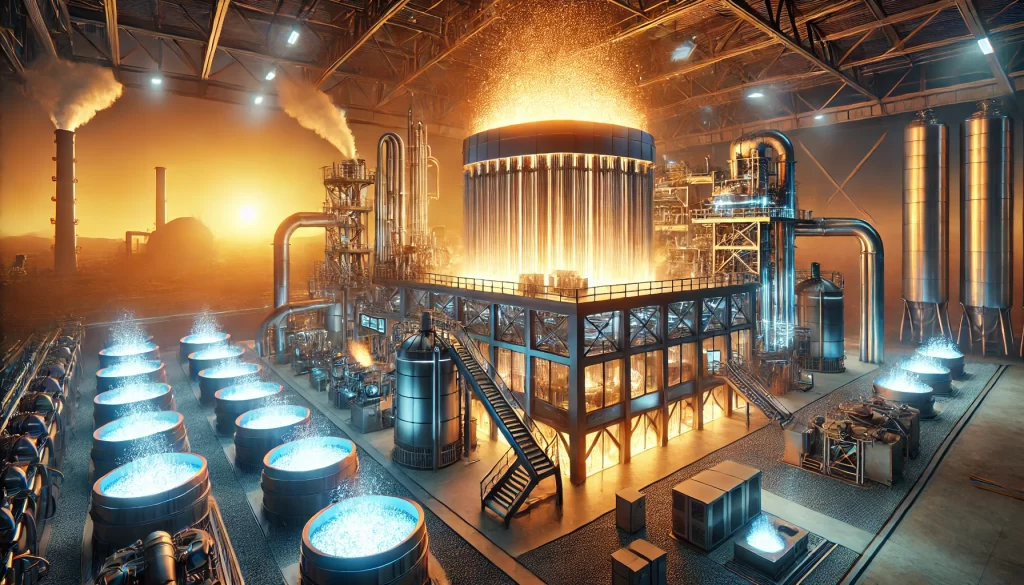The introduction of Plsar Technology to remove sulfur marks a significant breakthrough in the quest for cleaner energy. Sulfur, a common pollutant in fossil fuels, has long been a challenge in the energy industry. Its removal is essential to reducing emissions and combating environmental pollution. Plsar Technology offers a revolutionary approach to this problem, promising a cleaner and more sustainable energy future. This article explores how Plsar Technology works, its benefits, and its potential impact on the energy industry.
Understanding Plsar Technology to Remove Sulfur

What is Plsar Technology?
Plsar Technology to remove sulfur is a cutting-edge method designed to efficiently extract sulfur from fossil fuels. Sulfur, when burned, produces sulfur dioxide—a harmful pollutant that contributes to acid rain and respiratory problems. Traditional methods of sulfur removal are often costly and inefficient, making the development of Plsar Technology a game-changer in the industry.
Plsar Technology uses advanced chemical processes to target and remove sulfur compounds from fuels like coal, oil, and natural gas. This technology purifies the fuel and ensures that the energy produced is cleaner and less harmful to the environment.
How Does Plsar Technology Work?
The process behind Plsar Technology to remove sulfur involves a series of chemical reactions that isolate sulfur molecules and separate them from the fuel. This is achieved through a patented method that is both energy-efficient and cost-effective. The technology works at a molecular level, ensuring that sulfur is removed without compromising the quality or energy content of the fuel.
Plsar Technology’s simplicity and efficiency make it a viable solution for industries looking to reduce their environmental impact. By integrating this technology, companies can produce cleaner energy without incurring excessive costs or reducing fuel efficiency.
The Benefits of Plsar Technology to Remove Sulfur
Environmental Impact
One of the most significant benefits of Plsar Technology to remove sulfur is its positive environmental impact. By removing sulfur from fossil fuels, this technology helps to reduce the amount of sulfur dioxide released into the atmosphere. This reduction in emissions is crucial for combating air pollution and mitigating the effects of acid rain.
Furthermore, adopting Plsar Technology contributes to the global effort to reduce greenhouse gas emissions. Technologies like Plsar are vital in achieving sustainability goals as the world moves towards cleaner energy solutions.
Economic Advantages
In addition to its environmental benefits, Plsar Technology to remove sulfur offers significant economic advantages. Traditional methods of sulfur removal are often expensive and energy-intensive. Plsar Technology, on the other hand, is designed to be cost-effective, reducing the overall expenses associated with fuel purification.
Industries adopting Plsar Technology can benefit from lower operating costs, making their energy production more competitive. Moreover, the reduced need for additional pollution control measures can result in further savings, enhancing the profitability of clean energy production.
Improved Fuel Quality
Another key advantage of Plsar Technology to remove sulfur is improving fuel quality. Sulfur impurities can reduce the efficiency of fuels and contribute to the corrosion of engines and industrial equipment. By removing sulfur, Plsar Technology enhances the performance and longevity of the fuel and the machinery that uses it.
This improvement in fuel quality benefits energy producers and has positive implications for consumers. Cleaner fuels lead to better engine performance, reduced maintenance costs, and longer equipment life, making Plsar Technology an attractive option for industrial and consumer applications.
The Future of Clean Energy with Plsar Technology

Plsar Technology in the Energy Industry
As the energy industry continues to evolve, Plsar Technology’s role in removing sulfur is expected to grow. With increasing regulatory pressures to reduce emissions, energy producers seek innovative solutions to meet environmental standards. Plsar Technology provides a practical and scalable solution that can be integrated into existing infrastructure with minimal disruption.
Plsar Technology’s flexibility allows it to be applied across various energy sectors, including coal, oil, and natural gas. This adaptability makes it a key player in the transition towards cleaner energy sources, as it offers a viable alternative to more traditional and less efficient sulfur removal methods.
Global Implications
The adoption of Plsar Technology to remove sulfur has significant global implications. As countries worldwide strive to meet international climate goals, the need for cleaner energy solutions has never been greater. Plsar Technology offers a way for nations to reduce their carbon footprint while continuing to utilize existing fossil fuel resources.
Plsar Technology can play a critical role in reducing environmental impact in regions where fossil fuels remain a primary energy source. By implementing this technology, countries can improve air quality, protect public health, and contribute to global efforts to combat climate change.
Challenges and Opportunities
While Plsar Technology to remove sulfur presents numerous benefits, its widespread adoption may face challenges. One potential obstacle is the initial investment required to implement the technology. However, the long-term cost savings and environmental benefits will likely outweigh the upfront expenses.
Additionally, the continued development and refinement of Plsar Technology will be essential to ensure its effectiveness and scalability. As research progresses, we can expect to see further innovations that enhance this technology’s capabilities, making it even more accessible and beneficial to the energy industry.
Plsar Technology to remove sulfur is a groundbreaking advancement in the quest for clean energy. By effectively removing sulfur from fossil fuels, this technology reduces harmful emissions, enhances fuel quality, and offers significant economic benefits. As the world continues to seek sustainable energy solutions, Plsar Technology stands out as a promising tool in the fight against pollution and climate change.
The introduction of Plsar Technology to remove sulfur marks a significant breakthrough in the quest for cleaner energy. Sulfur, a common pollutant in fossil fuels, has long been a challenge in the energy industry. Its removal is essential to reducing emissions and combating environmental pollution. Plsar Technology offers a revolutionary approach to this problem, promising a cleaner and more sustainable energy future. This article explores how Plsar Technology works, its benefits, and its potential impact on the energy industry.
Also Read: Joma Tech Breakthrough: Unveiling the Exciting Future of Tech
The Future of Clean Energy with Plsar Technology
Plsar Technology in the Energy Industry
As the energy industry continues to evolve, Plsar Technology’s role in removing sulfur is expected to grow. With increasing regulatory pressures to reduce emissions, energy producers seek innovative solutions to meet environmental standards. Plsar Technology provides a practical and scalable solution that can be integrated into existing infrastructure with minimal disruption.
Plsar Technology’s flexibility allows it to be applied across various energy sectors, including coal, oil, and natural gas. This adaptability makes it a key player in the transition towards cleaner energy sources, as it offers a viable alternative to more traditional and less efficient sulfur removal methods.
Global Implications
The adoption of Plsar Technology to remove sulfur has significant global implications. As countries worldwide strive to meet international climate goals, the need for cleaner energy solutions has never been greater. Plsar Technology offers a way for nations to reduce their carbon footprint while continuing to utilize existing fossil fuel resources.
Plsar Technology can play a critical role in reducing environmental impact in regions where fossil fuels remain a primary energy source. By implementing this technology, countries can improve air quality, protect public health, and contribute to global efforts to combat climate change.
Challenges and Opportunities
While Plsar Technology to remove sulfur presents numerous benefits, its widespread adoption may face challenges. One potential obstacle is the initial investment required to implement the technology. However, the long-term cost savings and environmental benefits will likely outweigh the upfront expenses.
Plsar Technology to remove sulfur is a groundbreaking advancement in the quest for clean energy. By effectively removing sulfur from fossil fuels, this technology reduces harmful emissions, enhances fuel quality, and offers significant economic benefits. As the world continues to seek sustainable energy solutions, Plsar Technology stands out as a promising tool in the fight against pollution and climate change.
The future of energy production lies in adopting innovative technologies like Plsar. By embracing this technology, industries can contribute to a cleaner, healthier planet while improving their bottom line. The impact of Plsar Technology to remove sulfur is far-reaching, offering a path towards a more sustainable and environmentally responsible energy future.



